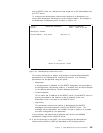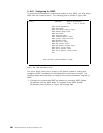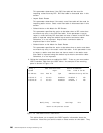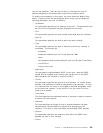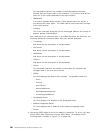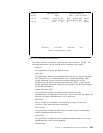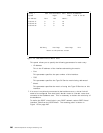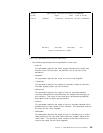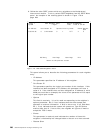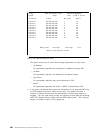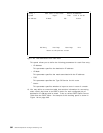
from the
OSPF Menu
. The resulting panel is shown in Figure 173 on
page 295.
Config * OSPF Address Range Table Module: BladeRunner
System Page 1 Time: 12:04 11 Jan 95
Area ID Range Net Range Mask
0.0.0.0 9.67.46.0 255.255.255.000
Add Entry Prev Page Next Page Exit
Return to the previous screen
Figure 173. LMS OSPF Area Address Range Panel
The panel allows you to define the following parameters for each entry:
•
Area ID
This a 32-bit integer uniquely identifying the area in which the address
range is to be found.
•
Range Net
This is the IP address of the network or subnetwork indicated by the
range. This parameter allows you to assign a single network address to
a group of subnets. This network address, together with the subnet
mask you provide, specifies the subnets to be grouped in this area
range. Just one link summary advertisement will be generated for all
subnets in this range, rather than one link summary for each of the
subnets included in that network.
•
Range Mask
This parameter specifies the subnet mask that pertains to the network or
subnetwork specified in the Range Net parameter.
For example, if we specify Range Net 9.67.46.0 and Range Mask
255.255.255.0. It means that the link summary advertisement generated will
summarize networks 9.67.46.0 to 9.67.46.254.
Note: When setting up your OSPF network, keep all subnetted networks in
the same area.
6. Define the metrics to be advertised for each interface for various Types Of
Service (TOS). To do so, select
OSPF Interface Metric Table
from the
OSPF
Menu
. An example of the displayed panel is shown in Figure 174 on
page 296.
Chapter 11. 8260 Multiprotocol Interconnect Module 295



